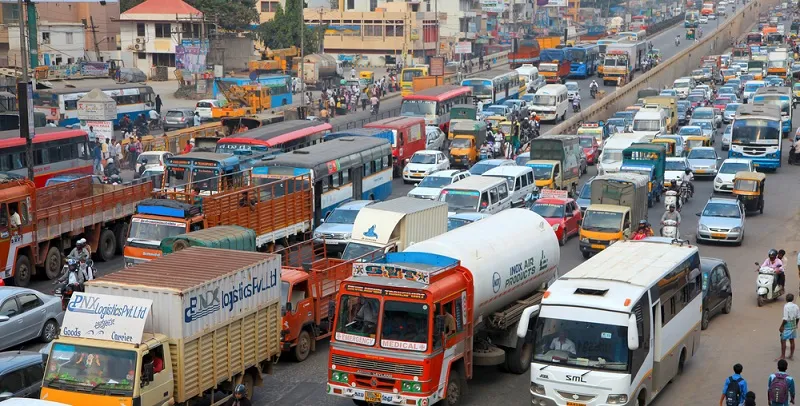Rising air pollution prompts NGT to take drastic steps to curb diesel vehicles in 6 cities
The National Green Tribunal (NGT) on May 23 sought ban on more than 10-year-old light and heavy diesel vehicles in six municipal corporations of Kerala. The ban also prevents the state government from registering new private diesel vehicles of 2000 cc and above, except for the state or government automobiles.

According to Kerala Transport Minister Tomin J Thachankery, two lakh vehicles will have to be taken off the roads in a month after implementation of the order. Not very happy with the decision, he said, “We will move the High Court against the order.”
The six municipal corporations include Thiruvananthapuram, Kollam, Kochi, Thrissur, Kozhikode, and Kannur. After one month, starting May 23, these vehicles will be fined Rs 5000 if found operating. The traffic police or state pollution control board is allowed to collect the fine.
The state transport corporation has around 2,000 diesel buses which are 10 years old. Additionally, Thachankery says that when the verdict is implemented, 4,000 of the 16,000 privately-owned passenger buses will also be directly affected along with the sale of SUVs and MUVs in Kerala.
Learning from Odd and Even
This is not the first time a state has implemented such radical steps to curb pollution. New Delhi, infamous for its high levels of pollution and particulate matter in the air, has been defined ‘severely polluted’ over 65 per cent of the time, between November 2014 and January 2015. The levels of PM 2.5 (or particulate matter) were listed to be three-to-four times above the acceptable safety threshold.
Waking up to this, Delhi Chief Minister Arvind Kejriwal introduced the Odd-Even rule. Implemented from January 1stof this year, the traffic actually increased in the first week of the ban. However, the PM 2.5, or particulate matter content, dropped by roughly 10% in the air.
According to reports by researchers, daily level of particulate matter pollution in Delhi dropped by 10–13% during the vehicle restrictions with hourly comparisons showing even greater improvements, reaching an 18% fall.
According to a database released by World Health Organisation (WHO), Delhi was no longer the most polluted city in the world, dropping its particulate matter content from 153 micrograms per cubic metre in 2014 to 122 micrograms per cubic metre, this month.
However, phase two of the Odd-Even rule in Delhi is coming along a little choked and sluggish, owing to the additional private and CNG vehicles on the road as well as functioning schools and on-going construction work.
Not just New Delhi, but globally governments have taken tough calls to curb air pollution in their country:
- Cities like Stockholm, London, and Copenhagen have introduced ‘low emission zones’ in their city centers with mayors taking bold steps to restrict access to thousands or millions of private vehicles in the city.
- Since 1992, Mexico City has come a long way to reduce its carbon emissions after being stated as the world’s most polluted However, the government ordered as many as two million private cars off the road – nearly 40% of privately-owned vehicles — following dangerously high levels of pollution in the air.
- In December 2015, Mayor Giuliano Pisapia of Milan banned cars, motorcycles, and scooters from the city centre for three days.
- For urban planning and mobility management, San Francisco introduced SF Park, a parking programme with a pricing mechanism which saw a 50 % reduction in cruising for parking.
But for India there is a major problem in hand.
99.5% of India affected by air pollution
Due to the high particulate matter, India has more than 600,000 premature deaths each year, from lung cancer, asthma, cardiovascular, and respiratory diseases.
As a matter of fact, according to WHO’s recent report on air pollution, four Indian cities are named in the top 10 most polluted cities in the world.
Gwalior is ranked as the second-most polluted country in the world followed by Allahabad (at third), as well as Patna and Raipur in the top 10.
According to the Central Pollution Control Board (CPCB), 77% of Indian urban clusters exceed the National Ambient Air Quality Standard (NAAQS) for respirable suspended particulate matter (PM10).
Further, 54% of India’s population lives in regions that do not meet the NAAQS standards for fine particulate matter with nearly every Indian (99.5 per cent) living in a region with air pollution levels above the stricter guidelines of the WHO.
In such cases, taking bold steps to curb air pollution by implementing strict regulation becomes the need of the hour.







